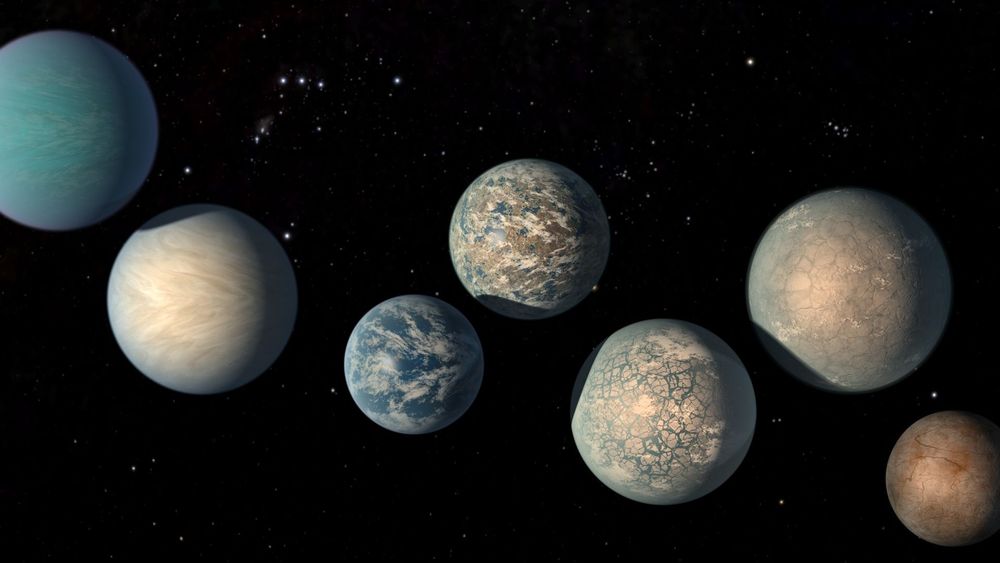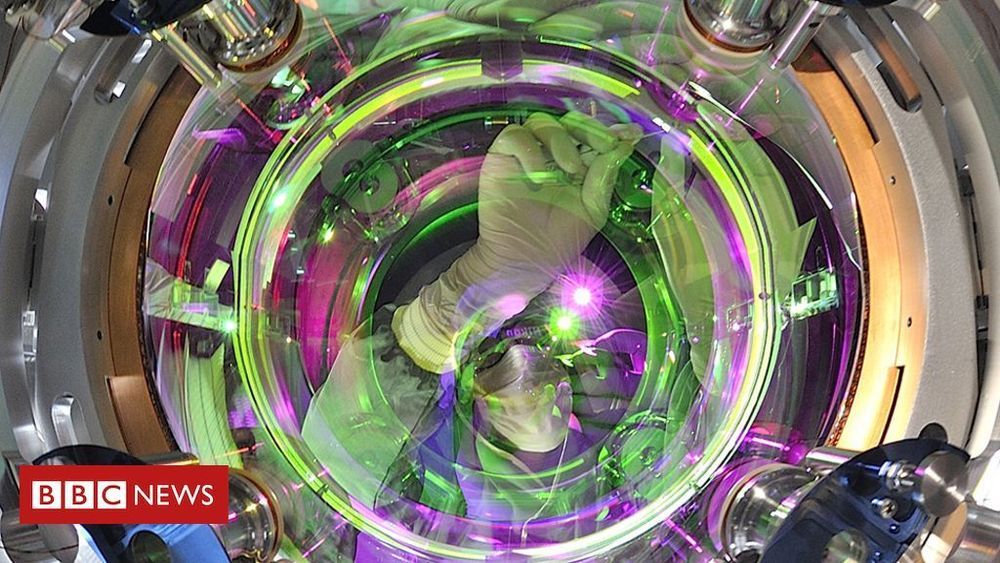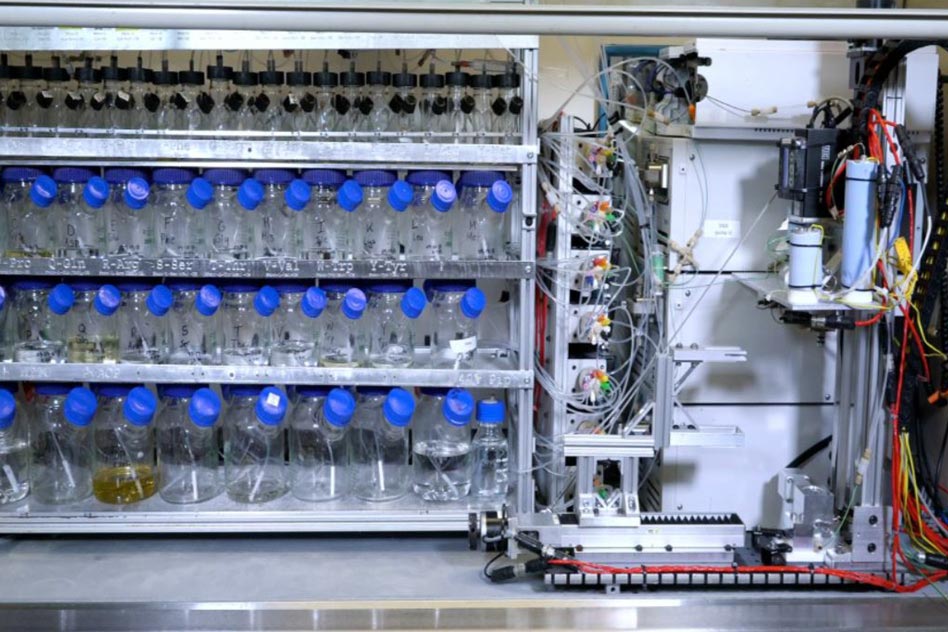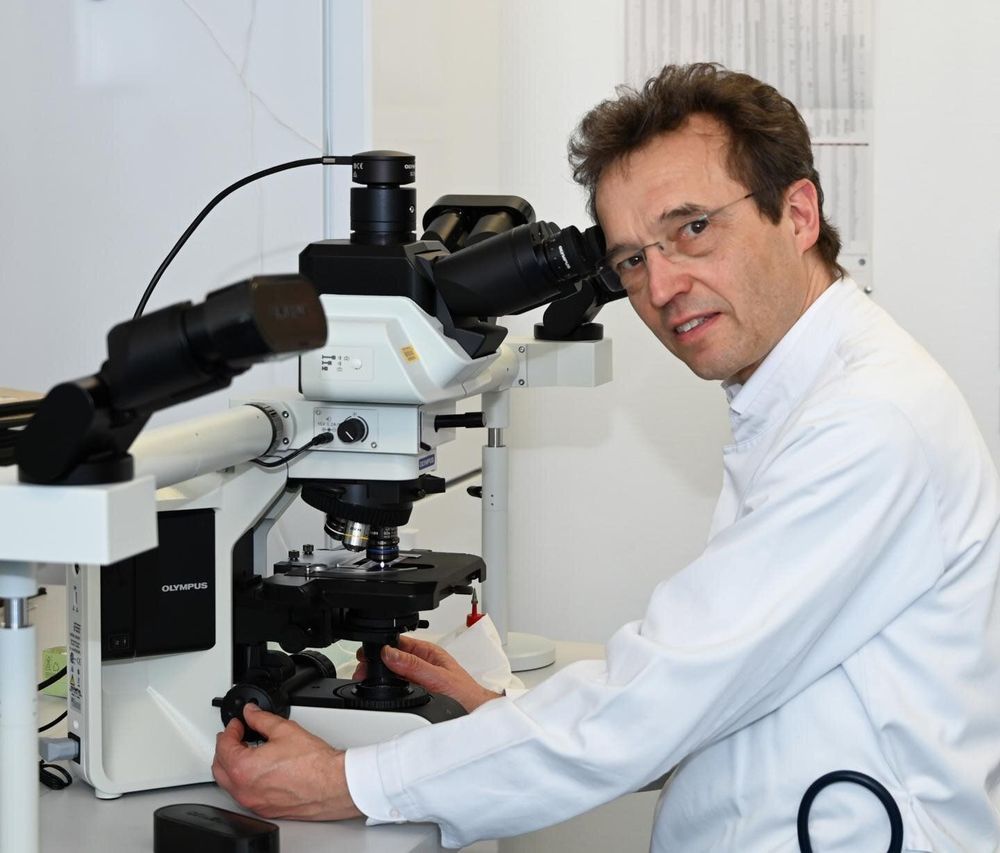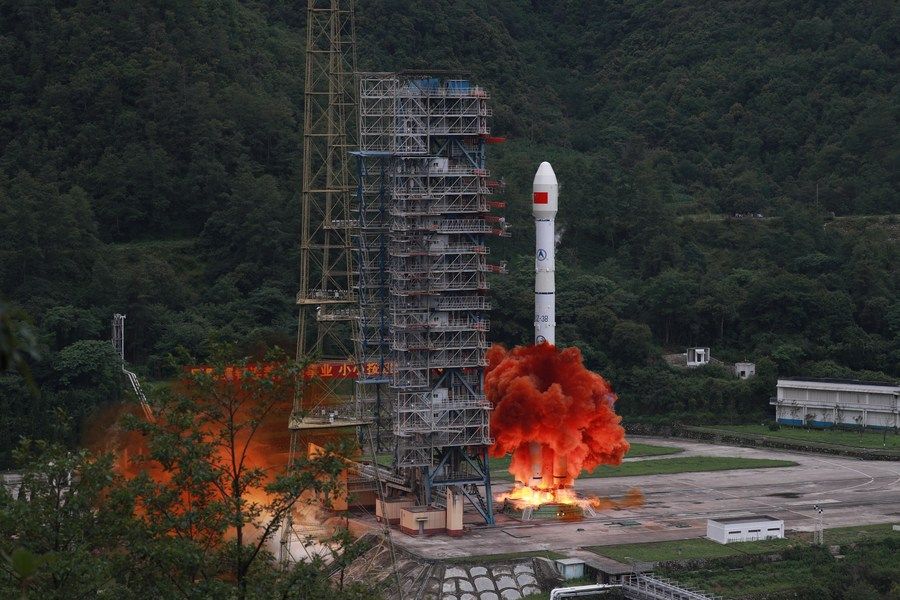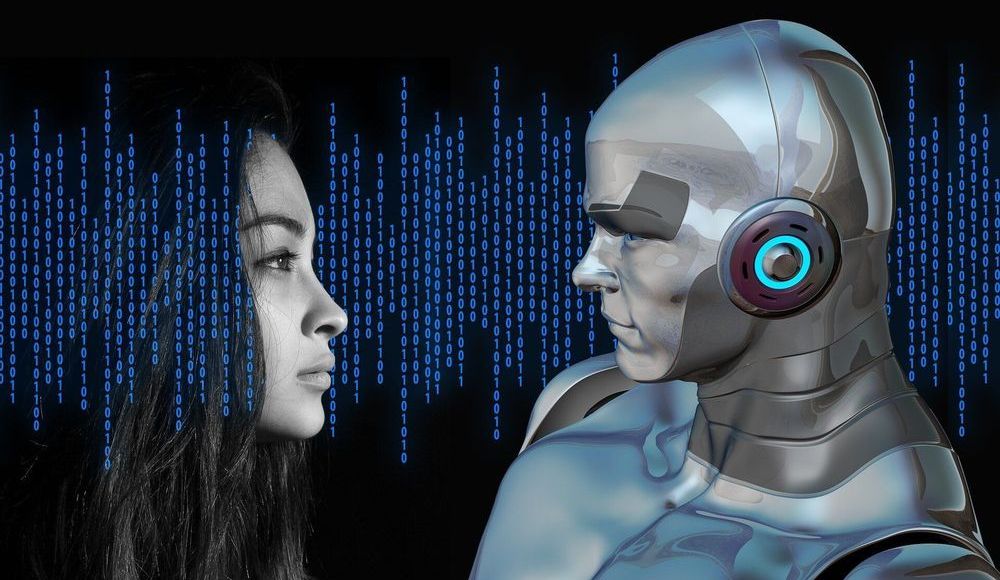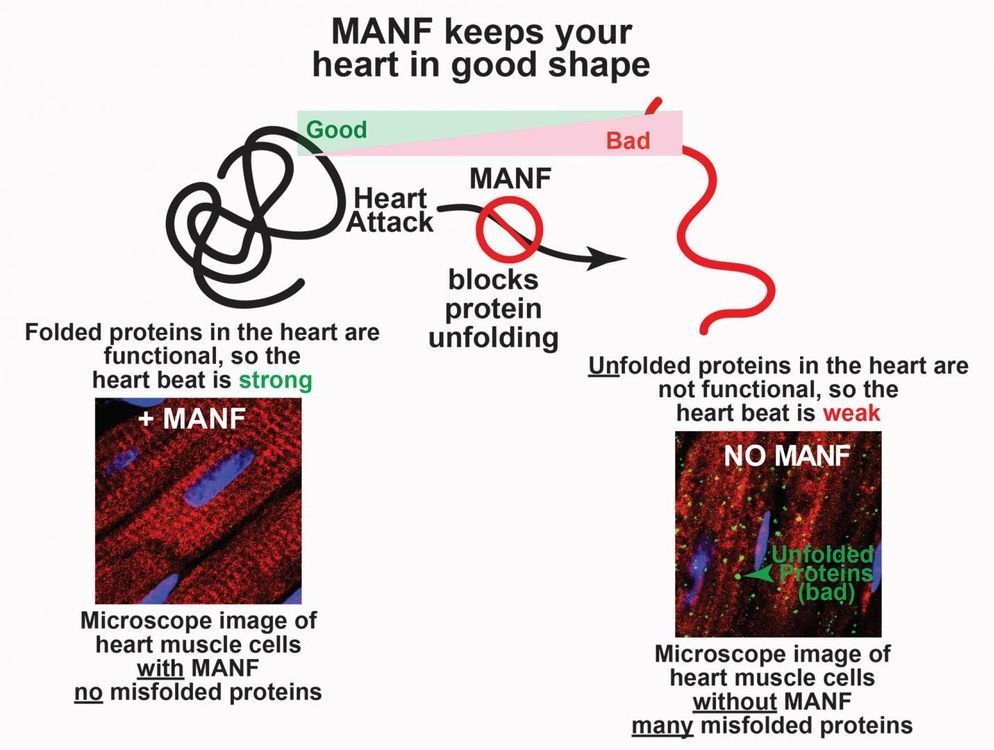Page 7649
NASA scientists decided to explore whether — hypothetically — there are ocean planets in the Milky Way galaxy that are similar to the watery solar system moons Europa and Enceladus.
Jun 23, 2020
‘Black neutron star’ discovery changes astronomy
Posted by Genevieve Klien in category: space
Laser labs that detect ripples in space-time may have witnessed a new class of cosmic object.
Jun 23, 2020
MIT Automated Tabletop Fast Protein Synthesis Machine May Accelerate Drug Development
Posted by Genevieve Klien in categories: biotech/medical, engineering, genetics
Automated tabletop machine could accelerate the development of novel drugs to treat cancer and other diseases.
Many proteins are useful as drugs for disorders such as diabetes, cancer, and arthritis. Synthesizing artificial versions of these proteins is a time-consuming process that requires genetically engineering microbes or other cells to produce the desired protein.
MIT chemists have devised a protocol to dramatically reduce the amount of time required to generate synthetic proteins. Their tabletop automated flow synthesis machine can string together hundreds of amino acids, the building blocks of proteins, within hours. The researchers believe their new technology could speed up the manufacturing of on-demand therapies and the development of new drugs, and allow scientists to design artificial proteins by incorporating amino acids that don’t exist in cells.
Jun 23, 2020
Morgan Stanley predicts Tesla will make almost twice as much money as Uber in 5 years
Posted by Kelvin Dafiaghor in category: economics
Do you agree Eric Klien?
Tesla’s EBITDA will be almost twice as high as Uber’s in 2025, Morgan Stanley projected in a note to clients.
Jun 23, 2020
Cancer drug cures COVID-19 patient with acute respiratory distress
Posted by Omuterema Akhahenda in category: biotech/medical
“We knew from Chinese publications that patients with a severe and even fatal course of the disease are characterized by a so-called cytokine storm,” Neubauer says. “During a cytokine storm, the body is flooded with substances that stimulate the immune system.” This overreaction of the body’s own defense system damages the tissue—making it all the easier for the invading virus to spread.
Neubauer suspected that the patient might respond to ruxolitinib, a drug originally used in cancer treatment. It inhibits enzymes in the body involved in excessive inflammatory reactions. “We suggested to our colleagues who were treating the patients that the cancer drug might be able to prevent the life-threatening effects brought on by the inflammatory damage to lung tissue,” Neubauer says.
Although the spreading SARS-CoV-2 coronavirus usually causes only mild respiratory symptoms, the COVID-19 disease progresses so severely in around five percent of those affected that acute respiratory distress can occur. “The mortality rate in these cases is high,” says Dr. Thomas Wiesmann, who attended the patient along with the intensive care team in the Department of Anesthesia and Intensive Care at Marburg University Hospital.
Jun 23, 2020
Xinhua Headlines: China launches last BDS satellite to complete global navigation constellation
Posted by Fyodor Rouge in category: satellites
China launched the last satellite of the BeiDou Navigation Satellite System on Tuesday, marking the completion of the deployment of its own global navigation system. The mission, the 336th by the Long March rocket series, was a “complete success” http://xhne.ws/qCGPZ
– China launched the last BDS satellite on Tuesday, marking the completion of the deployment of its own global navigation system.
— The three GEO satellites, including the newly launched one, feature two distinctive creations of the BDS system — active positioning and short message communication.
Jun 23, 2020
Study illustrates huge potential of human, artificial intelligence collaboration in medicine
Posted by Kelvin Dafiaghor in categories: biotech/medical, robotics/AI
A.i assisting the doctors.
Artificial Intelligence (AI) is increasingly being used in medicine to support human expertise. However, the potential of these applications and the risks inherent in the interaction between human and artificial intelligence have not yet been thoroughly researched. The fear is often expressed that in future, as soon as AI is of sufficient quality, human expertise will become dispensable and therefore fewer doctors will be needed. These fears are further fuelled by the popular portrayal of this as a “competition” between humans and AI. An international study led by MedUni Vienna has now illustrated the enormous potential of human/computer collaboration.
The international study led by Philipp Tschandl and Harald Kittler (Department of Dermatology, MedUni Vienna) and Christoph Rinner (CeMSIIS/Institute for Medical Information Management, MedUni Vienna) now debunks the idea of this alleged competition, highlighting instead the enormous potential of combining human expertise with Artificial Intelligence. The study published in Nature Medicine examines the interaction between doctors and AI from various perspectives and in different scenarios of practical relevance. Although the authors restrict their observations to the diagnosis of skin cancers, they stress that the findings can also be extrapolated to other areas of medicine where Artificial Intelligence is used.
Jun 23, 2020
Dexamethosone: Upcoming Treatment for the Coronavirus | The State of Science
Posted by TJ Yoo in categories: biotech/medical, business, science
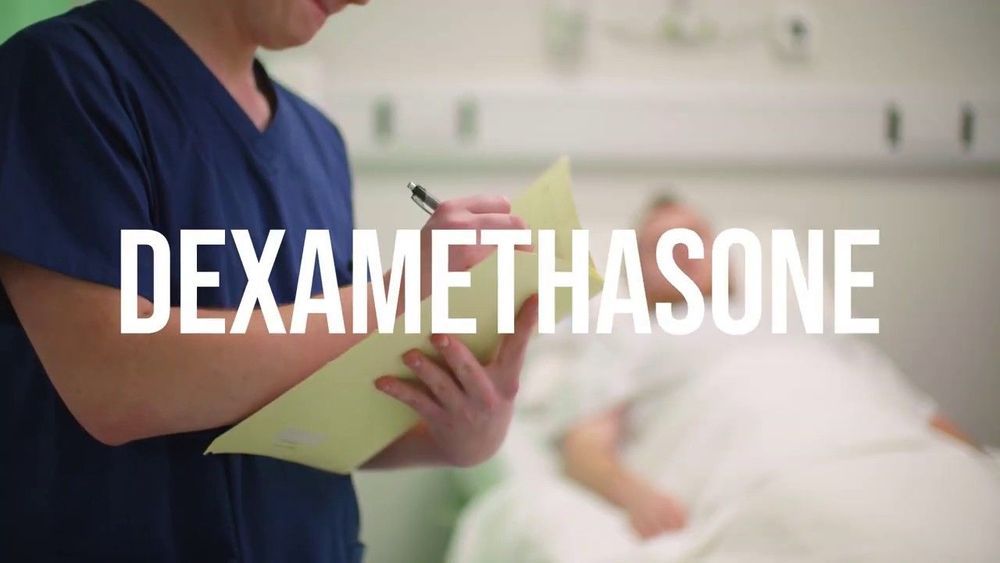
Until recently, there has not been a treatment for the deadly coronavirus. However, that is about to change with the discovery of a new compound: Dexamethosone! With this compound, the worst cases of the coronavirus have seen an increased survival rate.
PS: The stock footage from this photo comes from Videvo!
Continue reading “Dexamethosone: Upcoming Treatment for the Coronavirus | The State of Science” »
Jun 23, 2020
Reducing the damage of a heart attack
Posted by Genevieve Klien in category: biotech/medical
Cardiology researchers have discovered how a key protein can help the heart regulate oxygen and blood flow and repair damage.
San Diego State University

